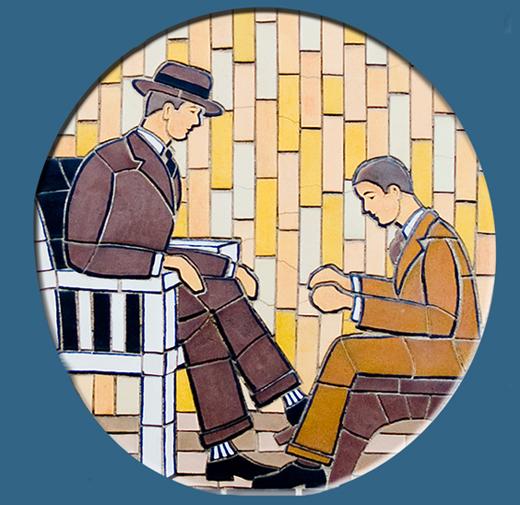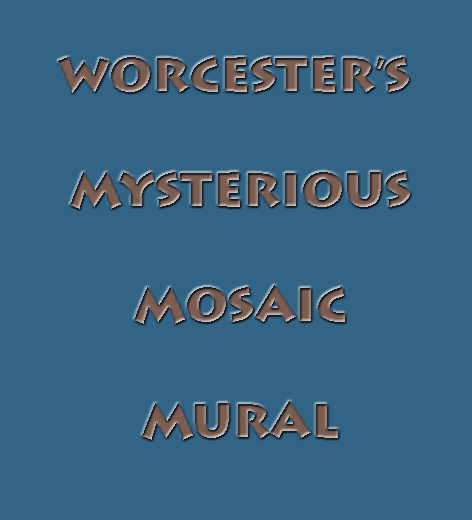Calling industrial sites "plants" is speaking a literal truth. With their roots at water, early industrial buildings sent runners in all directions in good times and withered back to their trunks in bad. And in death they left streetscape fossil outlines in truncated blocks and skeletal fragments of railroad track.
Hammond Street in Worcester climbs a steep hill through a series of drab industrial blocks. For decades, it was full of sound and movement as shifts changed and trucks whined up to loading docks in low gear. But on a recent Friday mid-morning, its sidewalks were empty and the few cars speeding uphill were no menace to a photographer standing in the middle of the road. Hammond Street's color scheme is faded brick red and concrete weathered grey, but on the boxy white warehouse at number 44 there is a flash of color. Shocking as a technicolor frame dropped into a black and white film, a multi-hued mosaic mural roosts atop a gilt sign reading "Melville Shoe Corporation".
The story of the Melville mosaic begins in 1892, when the owner of three Manhattan shoe stores fled his creditors. Former employee Frank Melville took over the business and expanded it to Brooklyn, Newark, and Bridgeport under the brand names “John Ward Men’s Shoes” and “Rival Shoe Company”. During World War I, Frank's son John Ward Melville allied with New Hampshire manufacturer J.F. McElwain to create a line of low-priced shoes. The younger Melville reputedly named the new retail chain for an obscure Scottish golfer, Thomas McCann. When he opened its first store in 1922, pairs of men’s dress shoes were commonly advertised at $7.00 to $8.00. Thom McAn charged a flat $3.99 per pair.
By 1927, Thom McAn was a chain of 300 stores, selling more shoes than the 20,000 pairs McElwain’s Nashua plant could produce each day. To escape distribution bottlenecks in New Hampshire, McElwain acquired a modern plant and Melville opened its central warehouse in Worcester. By 1930, Melville's warehouse had expanded to hold 17,000,000 pairs of shoes.
Melville Shoes weathered the depression, merged with McElwain, and sold its 100,000,000th pair of shoes in 1940. After the war, it followed its patrons from downtown to the suburbs and from Main Street to the mall.
But its greatest metamorphosis was yet to come..




